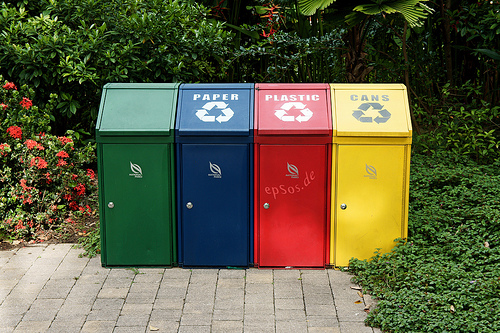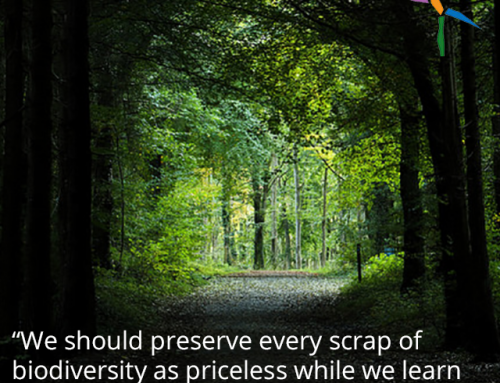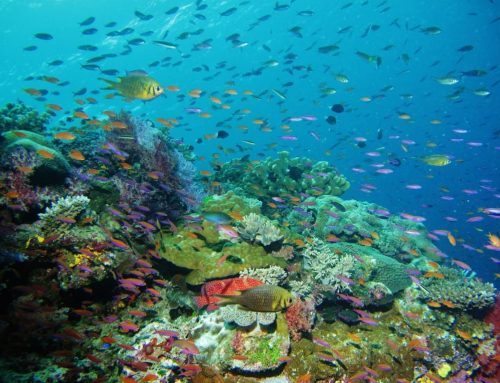If there’s one thing that we’re sure of when it comes to overconsumption: it leads to lots of trash and lots of landfill space. In the moment of a consumer purchase or consumer rush, you may not think of the trash aspect of consumerism. Trust us, though, that trash impact is significant. The next time that you’re out shopping, take a moment to consider these ten facts about trash in the U.S. We’re not saying that you need to give up shopping entirely, only that you may want to consider the end product of consumption.
Fact One: There’s Just A Lot of Trash Out There – Even Before Industrial Waste
According to the EPA, America’s waste management industry manages about 250 million tons of household and municipal solid waste per year. If you break that down, it means that the average American discards about 4.43 pounds of garbage every day. If you weigh 160 pounds, that’s almost 3% of your body weight that you throw out each day.
Fact Two: The Real Trash Number is Even Bigger
The number above simply accounts for individual and household waste. All of the buildings, cars and infrastructure that we so love create industrial waste as well. According to R.W. Beck’s book, Size of the United States Solid Waste Industry, when you add demolition and non-hazmat industrial waste to that number, the amount of trash more than doubles to 540 million tons.
Fact Three: Think Big for Reference
How much waste is that exactly? According to Beck’s book, it’s equal to the weight of more than 5600 Nimitz air craft carriers, 247 space shuttles, or 2.3 million Boeing 747 jumbo jets. If all of that waste were put into standard size garbage trucks, the trucks would form a line from New York City to Los Angeles and back more than a hundred times.
Fact Four: Disposable Plates and Utensils Aren’t Worth Their Convenience
While there are many everyday practices that impact the amount of trash generated in the United States, our addiction to takeout and fast food is a surprisingly huge one. According to cleanair.org, the average American office worker uses five hundred disposable cups each year and every year Americans throw away enough disposable cups, forks and spoons to circle the equator three hundred times.
Fact Five: Don’t Underestimate Plastic Bags
The debate about plastic versus reusable bags can get pretty heated, but here are some basic facts. Every year, Americans use approximately 102 billion plastic bags. Less than one percent of those plastic bags are recycled each year, but if they were it would be cost efficient. Recycling one ton of plastic bags costs $4000. The state of California alone spends about $25 million sending plastic bags to landfills and another $8.5 million cleaning plastic bags off of the streets.
Pro Tip: Don’t think you know all the pros and cons of plastic bags versus reusable ones. Get the facts here.
Fact Six: Are You Researching Airlines?
Yikes. Do you travel by air a lot? If so, take your own trash off of the plane and recycle it yourself. According to the Natural Resources Defense Council, airports and airlines recycle less than twenty percent of the 425,000 tons of passenger waste that they generate each year.
Fact Seven: Go Gently into Those Good Holidays
We all know that the holidays increase consumption and therefore increase waste, but here are some cold hard numbers to put it into perspective for you. About 2.6 billion holiday cards get purchased each year in the United States. That’s enough to fill a football field ten stories high. Each year, between Thanksgiving and New Year’s, an extra million tons of waste is generated each week. 38,000 miles of ribbon are thrown away each year – enough to tie a bow around the entire planet.
Pro Tip: You don’t need to be part of the problem. Here are creative and eco-friendly alternatives to greeting cards and holiday wrapping paper.
Fact Eight: We’re Not Judging, But Geography Seems to Make a Difference
Having an easier way to recycle makes a difference in how much recycling gets done. We all have busy lives and schedules. Only about 30% of people in the Southern United States have curbside recycling collection, compared with almost 85% in the Northeast.
Fact Nine: Bottle Your Own Water, People!
You’ve seen the commercials for water filters, so you likely know the facts. We’ll share them again, though! Over 1.3 million tons of plastic water bottles are produced in the United States each year. That requires energy equivalent to fifty million barrels of oil. A whopping seventy-six percent of these water bottles still end up in landfills.
Pro Tip: Know the facts. This is how long it takes for a plastic bottle to biodegrade.
Fact Ten: Electronics Recycling is Perhaps the Most Important
The need to recycle electronics is often overlooked, but electronics that don’t go to a recycling venue have a huge impact on the planet and society. Not only do the component parts pollute soil and groundwater, but many scavenged electronics pieces are sent to developing nations where struggling families and children disassemble them without proper protection.
Did we miss a fact about trash that you really, really feel that we should have shared? Tell us about it on the social media channels below.
Facebook | Twitter | Instagram | Tumblr | Pinterest | Google+
Photo Credit: epSos.ed via Flickr






